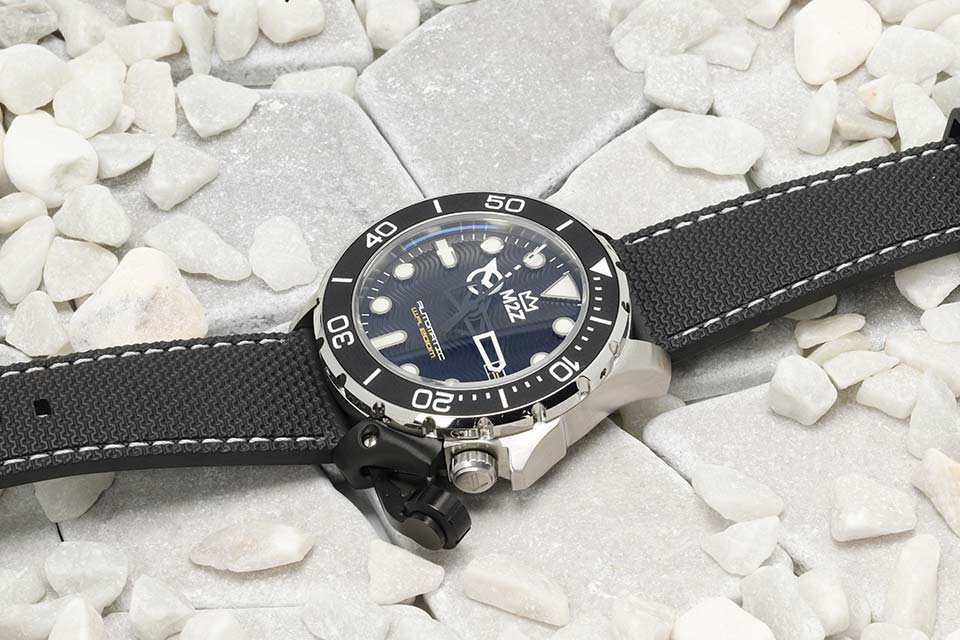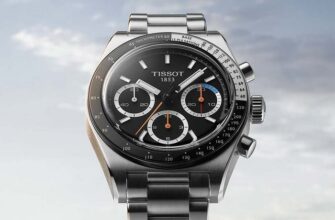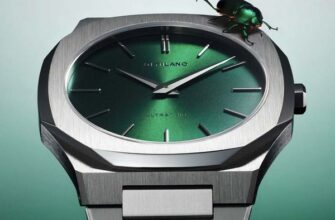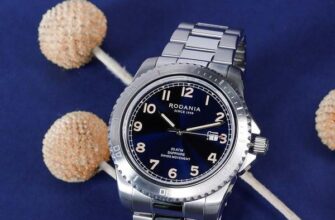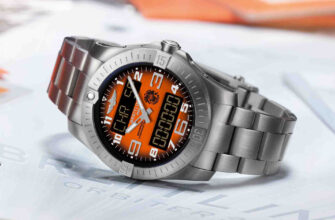A diving watch is a stylish accessory that should be in the collection of any connoisseur of quality movements. Not only do they go well with a business suit or a shirt+jeans combo, but they are also suitable for any activity, including the very diving for which they are designed.
Agree, this greatly simplifies life and reduces the number of hours needed for a comfortable existence. I always had 8-10 “three-handers” for a suit and a couple of casual models for free time, but the acquisition of several correct “diving” mechanisms allowed me to “clean” the collection of the least interesting items and spend the freed funds on new watches.
One of these models was Diver 200 (M2Z-200-002) of the Italian company M2Z. The company is young and has managed to release only one collection so far. More precisely, one model Diver 200 in eight colors. At the same time, the model has a water resistance of 200 meters, which, you see, is not bad. Let's remember how the big and interesting history of the diving watch building began!
Dive into the abyss
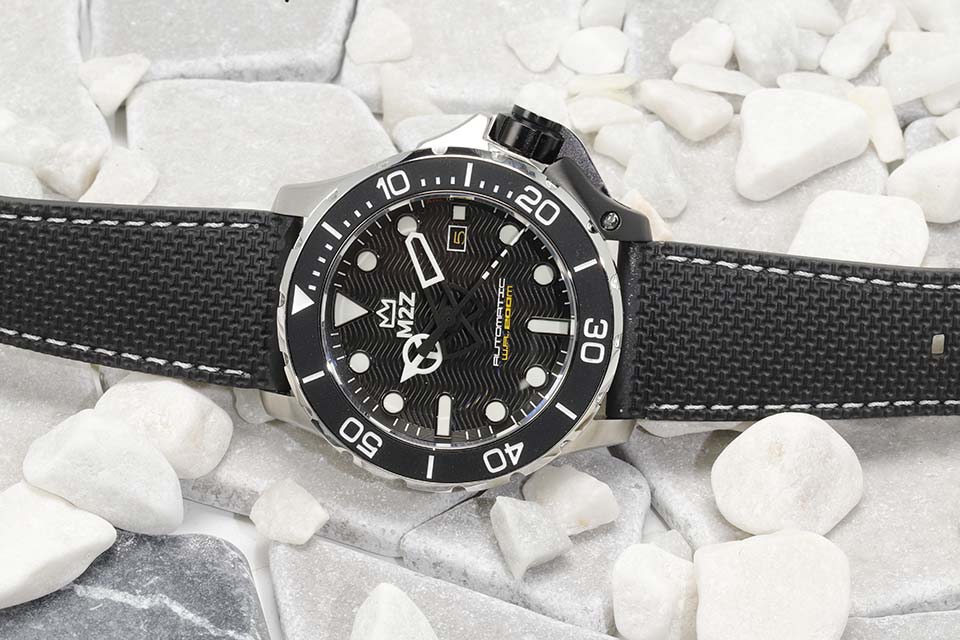
Few people know, but in the late 19th and early 20th centuries, divers did not use waterproof watches. They solved the problem with measuring time in a rather original way - an ordinary watch was attached inside a diving helmet. In the second decade of the 20th century, diving equipment became smaller and easier to dive, so engineers began to develop waterproof watches for both professional divers and research scientists.
The turning point in history came in 1926, when Rolex bought a patent for a watertight case fitted with an airtight seal and launched the Oyster. To demonstrate to everyone the uniqueness of this watch, the company organized a swim through the La Mashne of the British swimmer Mercedes Gleitz. The watch was hung from the swimmer's neck and spent more than 10 hours in cold water, but retained its performance and accuracy. This caused a sensation among the public and large sales of the new model.
However, the Omega company is ready to argue about who exactly became the first manufacturer of diving watches, which released the Marine model with a double retractable and removable case (of course, patented) in 1932. It has been officially certified as a watch capable of withstanding a pressure of 13,5 atmospheres (the equivalent of being submerged to 135 meters). The Italian military decided to place an order for waterproof watches with Panerai and in 1935 received a batch of Radiomir watches. After that, similar models began to be produced by other watch companies. True, they practically did not differ from each other, which was due to the design of the case.
insidious helium
The situation changed radically in 1953, when the leaders of the French elite division of combat swimmers came to the Swiss watchmakers Blancpain, who needed watches capable of working at great depths. The manufactory engineers created a new type of case with an additional chamber, into which a mixture of helium and air was pumped, thanks to which the caliber could work at a depth of 50 fathoms (91,5 m) specified by the customers. The model was called Fifty Fathoms (“50 fathoms”) and they became the first watch that was able to actually dive to this depth. In those years, it was believed that 90 meters was the limit of safe diving for a person. The use of a double case back by Edox in the Delfin line of watches has pushed the diving limit to 200 meters.
The Seiko company, which in 1968 was the first to release watches in a monocoque case, went its revolutionary way. The advantage of this design lies in the maximum strength and water resistance of the case, because it is machined from a single piece of steel and does not have a back cover at all. This is exactly the 316L stainless steel case found on the M2Z watch, which has expanded my collection. As you know, a watch case has at least three weak points (vulnerable to liquids) - the crown opening, the glass and the case back. By using a monocoque, M2Z removed one of the major causes of leakage.
Friends often ask me - "Why are diver's watches equipped with a helium valve?" I'm telling. The breathing mixture used by divers in deep sea diving contains helium. The fact is that ordinary nitrogen at great depths causes a state of drug intoxication, so it is replaced with helium. However, helium molecules are so small (27 times smaller than nitrogen molecules) that they can easily penetrate sealed watch gaskets designed to be protected from sea water. As a result, the case can be completely filled with helium, which, when the diver rises to the surface, begins to expand rapidly and squeezes out the watch glass, damaging the mechanism.
Therefore, diver's watches began to be equipped with a special valve, which, when ascending, releases gas to the outside, detaining water from entering. The monocoque design of the M2Z watch with valveless helium protection ensures complete sealing, preventing helium from getting inside the watch.
At great depth
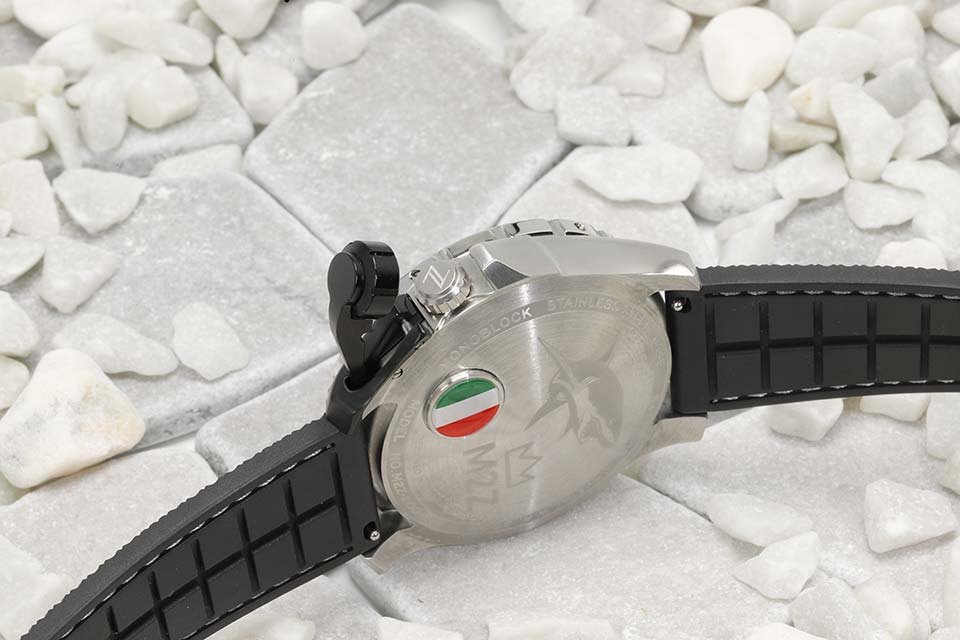
Let's take a closer look at the M2Z model. As I said, the case is implemented in the monocoque format, that is, it is machined from a single piece of metal. There is no back cover - no sealing gaskets - the possibility of water getting inside is excluded. 316L steel was chosen for its strength and corrosion resistance. On the back of the case, an image of a shark, a crown and the inscription M2Z are engraved. In addition, there is a prominent circle in the colors of the Italian flag. At the 4 o'clock position, there is a screw-down crown (equipped with a double sealing ring), which is protected from damage on both sides by the steel projections of the case and an additional hinged cap.
A thick sapphire crystal protrudes slightly above the rotating (counterclockwise only) bezel with a silicone insert. Probably, it would be more correct for the bezel to protrude, protecting the glass from damage during dives (I manage to knock the watch glass against various obstacles in the form of doors on land, so this is a very relevant topic for me), but the engineers decided differently. I assume that the water pressure simultaneously presses the glass into the body and flattens it slightly, clamping the sealing gasket. As a result, even helium cannot penetrate through it. And no helium valves, and no extra holes in the case. The water resistance of the watch is 200 meters. I think that without major alterations to the structure, it can be increased to 300-400 meters. Most likely, this will be done with the release of the next collection of the brand.
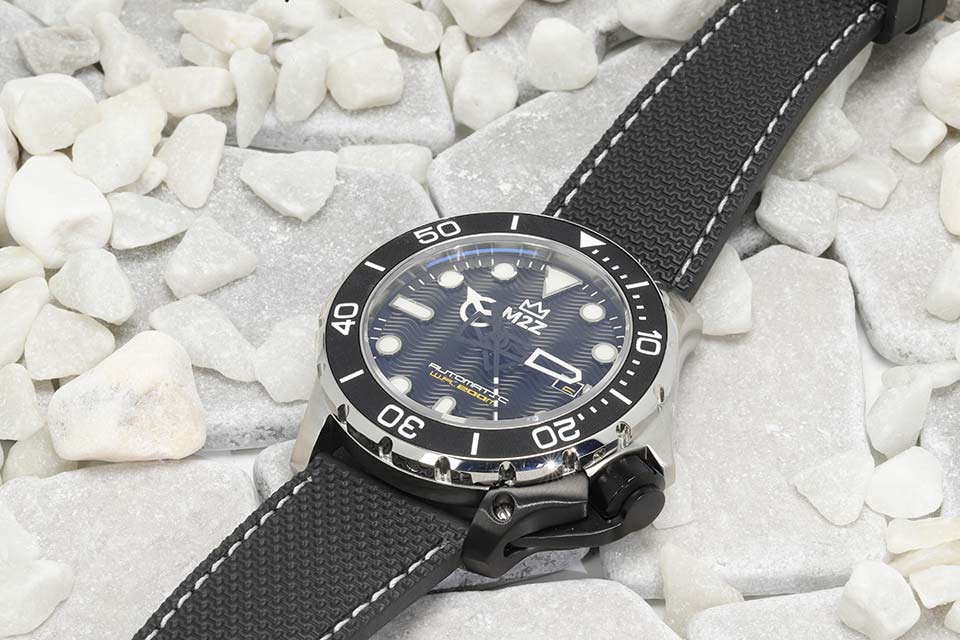
A reliable and precise Japanese-made Seiko NH35 automatic movement is installed inside the case. There are 24 jewels in the movement, the frequency is 21600 semi-oscillations per hour. Power reserve 41 hours. The date window is at the 3 o'clock position.
The hands of these watches are simply huge, because the larger the elements and the more phosphor on them, the brighter they glow and remain readable underwater longer. And much wider and larger than the models of other manufactories. And so that the big hands would not turn out to be too heavy (an additional load on the mechanism), they were made skeletonized, which did not affect readability. Large hour markers are perfectly visible even in not very transparent water (there was an opportunity to conduct an experiment).
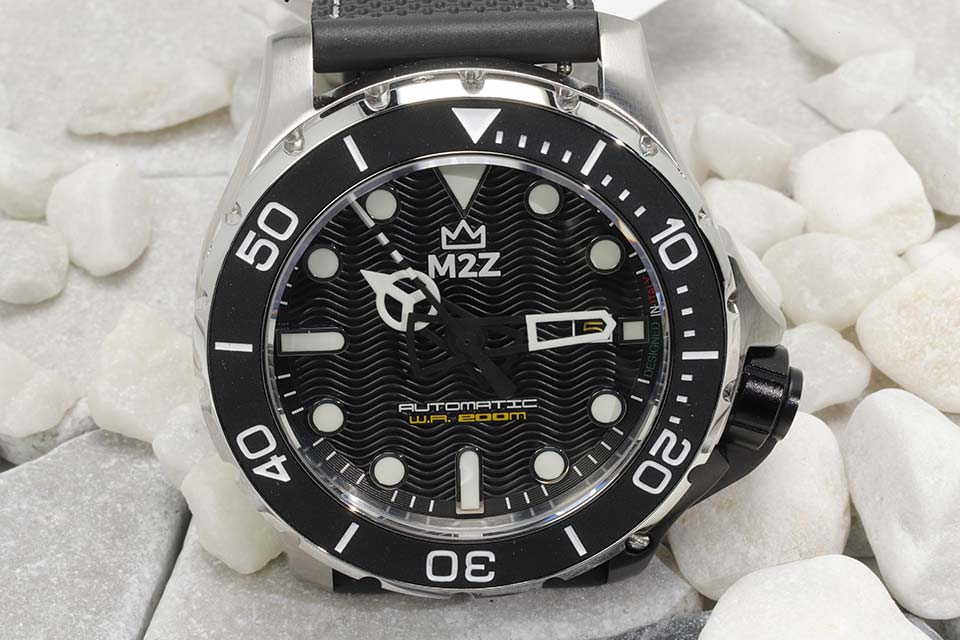
I really liked the comfortable strap, made of hypoallergenic polymer (FKM), which is used in the aerospace industry due to its high resistance to UV rays, chemicals and oxidants. Each strap features a 316L stainless steel buckle and a quick release mechanism for easy strap replacement. In general, the M2Z turned out to be a successful model, and the diameter of 46 millimeters turned out to be optimal for me. The watch looks beautiful and sits comfortably on the hand.
